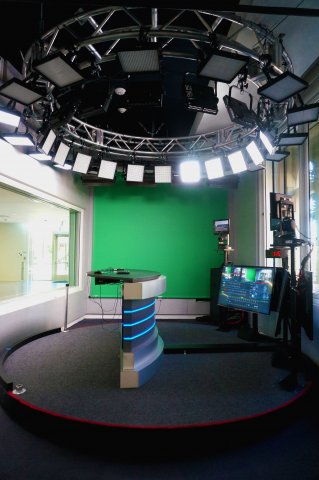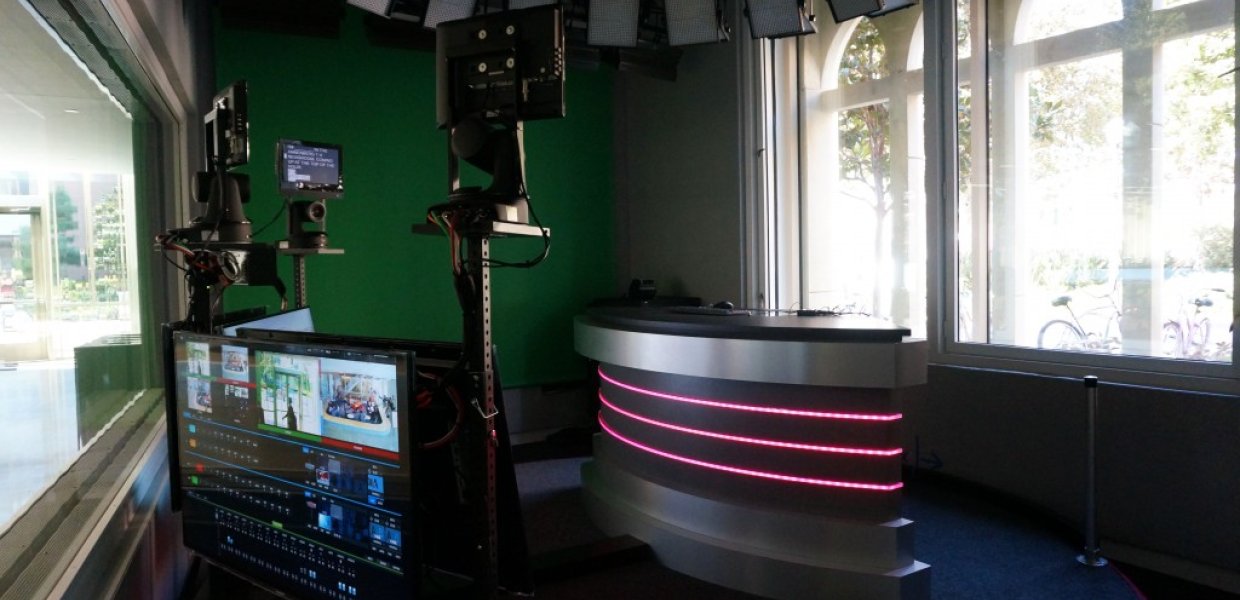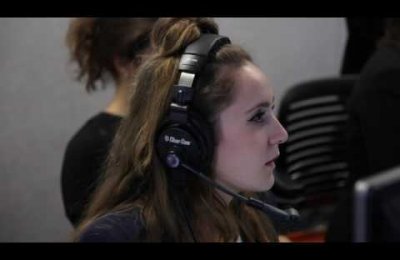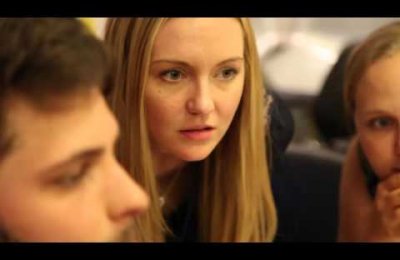
Studio A will give Annenberg students and staff easy access to record productions with less difficulty.
Carleo particularly likes the versatility the new stage provides.
“It gives the room flexibility and students can basically have any background they want by slightly turning the stage,” Carleo said.
Inside, students and faculty will also find a dropdown green screen,allowing for graphics and animation to be added into programs. The anchor desk is located in the center of the room and is adorned with three bands of LED lights that can change in color to alter the feel of a show. Lastly, four large monitors and a teleprompter sit in front of the desk. Chuck Boyles, director of multimedia production, was behind designing the studio and said he wanted to combine the Good Morning America style background with the functionality of a podcast. The space, however, will go beyond the production of podcasts. Individuals who use the space will have the ability to live stream, upload productions to YouTube or other shows. Additionally, productions can be inserted into forums, radio or television, Boyles said. Later, the room will also will have Skype capabilities. Currently, Studios B and C have been given priority over the use of Studio A due to the productions of ARN and ATVN.
Furthermore, before Studio A can be used, a series of workshops and training need to be given. One will focus on teaching users to produce simple shows on their own by a desk controller. The other training will be for cameramen and directors who can assist with greater productions by managing the technology of shows as interviews take place in the studio. Once people are trained and authorized to use Studio A, they can book it for use Cha said.
“We’ve already heard that some people want to use it for webinars and others want to use it for live interviews,” Cha said. “We have many professors who have wonderful guests and want to get their speakers in there too, so we hope to do all of that.”








